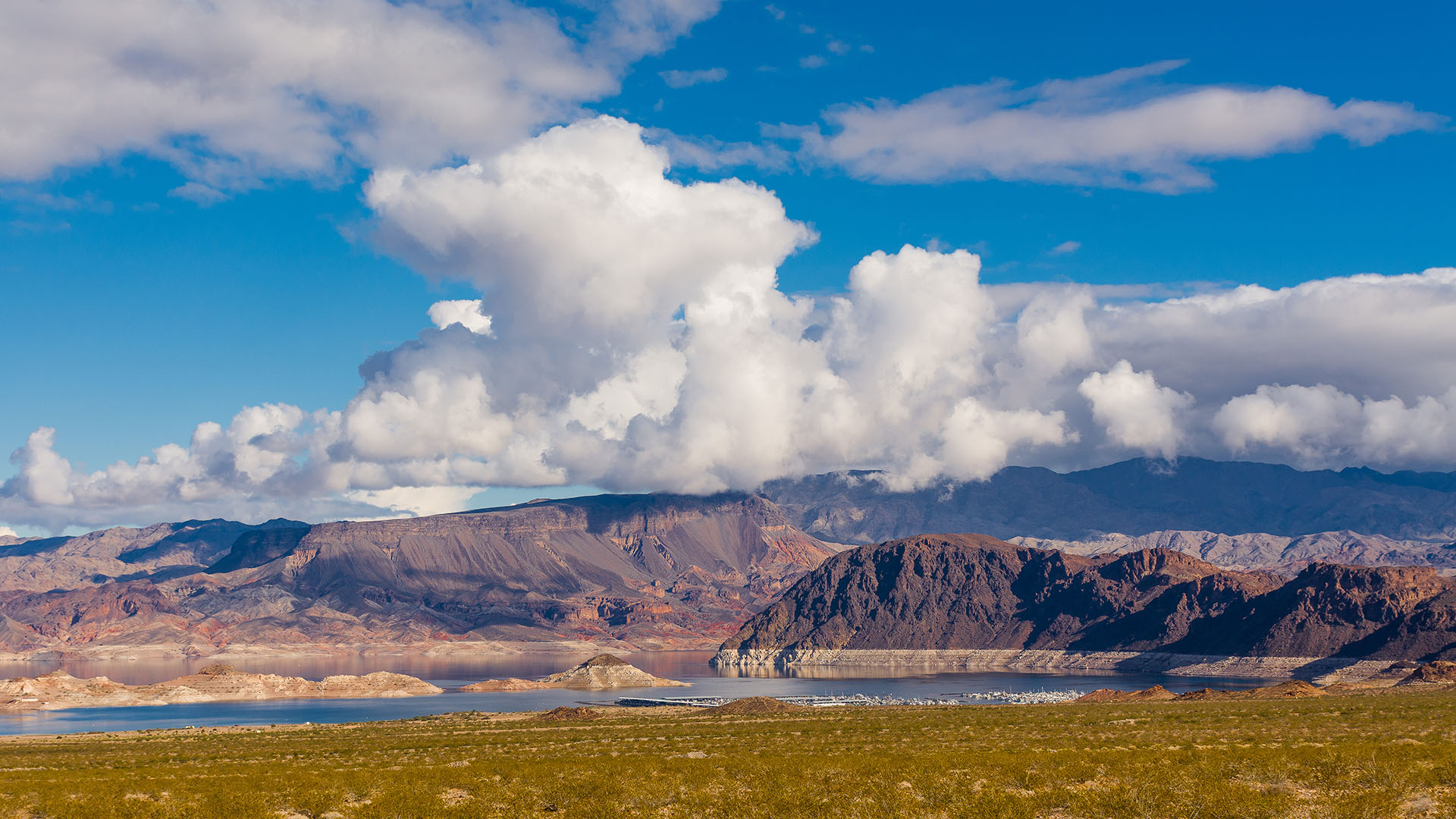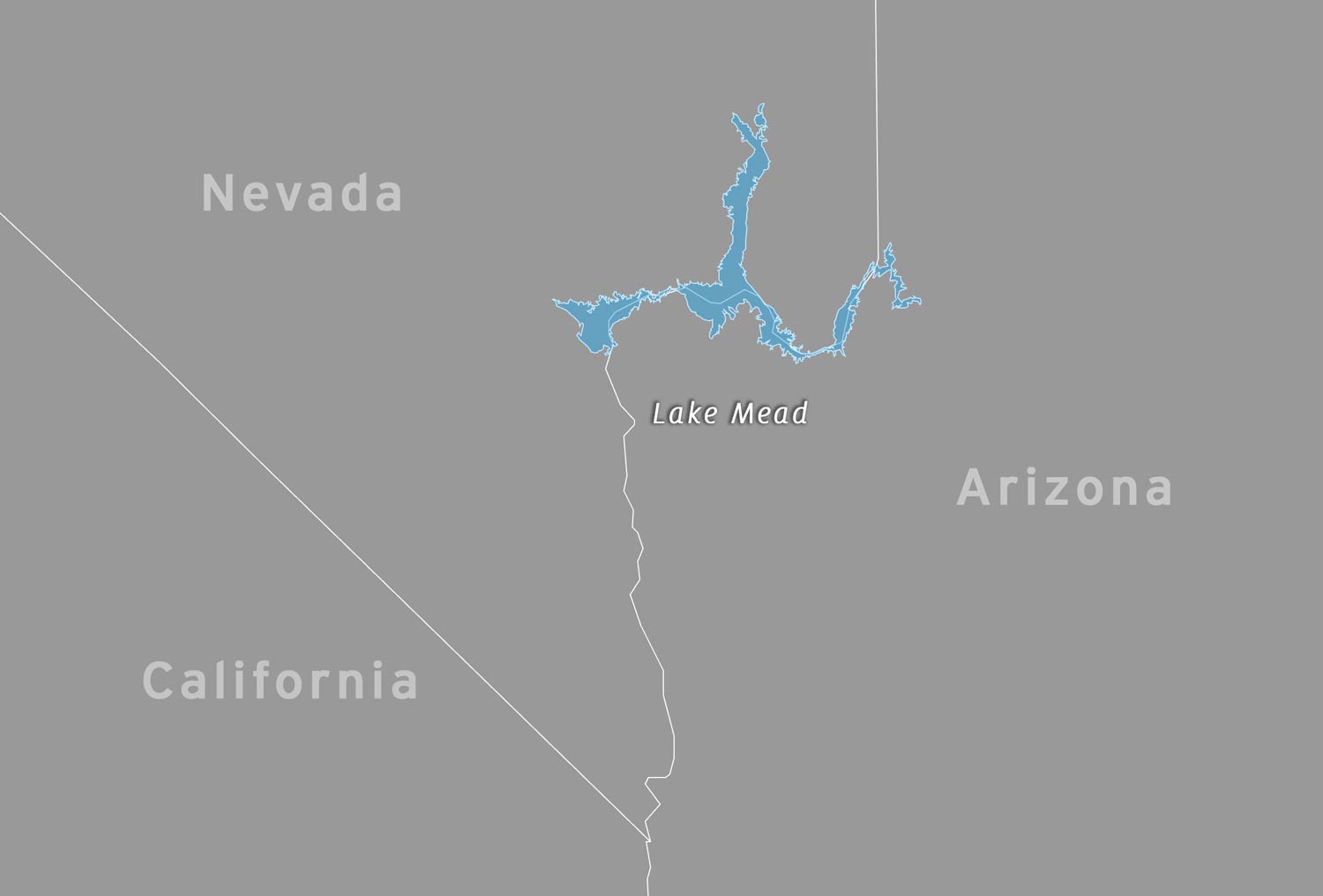 Boulder Basin at Lake Mead.
Boulder Basin at Lake Mead.
DENVER — A vital reservoir on the Colorado River will be able to meet the demands of Mexico and the U.S. Southwest for the next 13 months, but a looming shortage could trigger cutbacks in 2020, officials said Wednesday.
A forecast from the U.S. Bureau of Reclamation echoes previous warnings that a nearly 20-year trend toward a drier regional climate coupled with rising demand could drain so much water from the Lake Mead reservoir that cutbacks would be mandatory.
The report increases the pressure on seven U.S. states that rely on the river to finish a long-delayed contingency plan for a shortage.
"If these projections materialize, we're very quickly going to lose control of how to manage the deteriorating conditions on the Colorado River," said John Entsminger, general manager of the Southern Nevada Water Authority, which serves 2.1 million people, including the city of Las Vegas.
The Colorado River system — including the giant Lake Mead and Lake Powell reservoirs — serves about 40 million people and 6,300 square miles (16,300 square kilometers) of farmland. Arizona, California, Colorado, Nevada, New Mexico, Utah and Wyoming rely on the river, along with native American reservations and northwestern Mexico.
The water is divided under international treaties, court rulings and interstate agreements. If there's not enough water to go around, Mexico, Arizona and Nevada would be the first to see their shares reduced.
The Bureau of Reclamation forecast says all the users will get their usual share through the end of 2019. But the report projects that by October 2019, the surface of Lake Mead could fall below 1,075 feet (330 meters) above sea level, the agreed-upon point that would trigger an announcement of cutbacks that would occur in 2020.
 VIEW LARGER Managers fear water levels in Lake Mead could trigger cutbacks.
VIEW LARGER Managers fear water levels in Lake Mead could trigger cutbacks. The bureau operates on a water year that runs from October through September, tied to the cycle of winter snow and spring runoff.
"If everything holds true and the hydrology matches the models, then that's probably where we're going to be," agency spokesman Marlon Duke said.
The chances of a shortage in 2020 remain at 52 percent, the same odds the bureau announced in May, he said. Lake Mead has never had a shortage and if next winter provides enough snow in the mountains that feed the river, it could be averted, Duke said.
"It really depends on what kind of snowpack and precipitation we get across the basin throughout the coming winter," he said.
The Colorado River states agreed to come up with contingency plans to conserve water and avoid mandatory cutbacks in the event of a shortage. But negotiations have been slow and difficult, in part because Arizona's largest river users are still trying to agree on a unified state position, water experts said.
"Right now the thing that's holding it up is Arizona and the inability to come together," said John Fleck, director of the University of New Mexico's Water Resources Program. "The whole system is at risk."
A spokeswoman for the Central Arizona Project, the state's largest water supplier, declined to comment. Officials of the Arizona Department of Water Resources did not immediately respond to an email seeking comment.
The Bureau of Reclamation dates the Colorado River region's drought to 2000, but a small group of academics called the Colorado River Research Group said the river might be experiencing a longer-term shift to a more arid climate.
"Perhaps the best available term is aridification, which describes a period of transition to an increasingly water scarce environment," the group said in a March paper.
The bureau report underscores the underlying problem that Southwestern states face, said Jennifer Pitt, director of the Audubon Society's Colorado River Program.
The demand exceeds the supply, she said. "Anyone who has managed a bank account for families knows that over time, that spells disaster."
CORRECTION: A previous version of this story reported erroneously when potential cutbacks could begin if a shortage is declared. A shortage could be declared in the latter part of 2019, and cutbacks could begin in 2020, not late 2019.

By submitting your comments, you hereby give AZPM the right to post your comments and potentially use them in any other form of media operated by this institution.